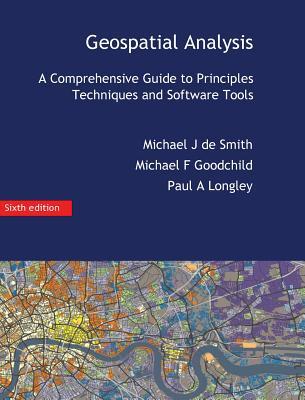Geospatial Analysis (6th edition) provides a compehensive guide to concepts, methods and tools, with many examples being provided using a variety of software tools such as ArcGIS, Idrisi, Grass, Surfer and many others to clarify the concepts discussed. Topics covered in detail include:
- Geospatial analysis concepts
- Analytical methodologies and model building
- Core components of geospatial analysis, including distance and directional analysis, geometrical processing, map algebra, and grid models
- Exploratory Spatial and Spatio-temporal Data Analysis (ESDA, ESTDA) and spatial statistics, including spatial autocorrelation and spatial regression
- Surface analysis, including surface form and flow analysis, gridding and interpolation methods, and visibility analysis
- Network and locational analysis, including shortest path calculation, travelling salesman problems, facility location and arc routing
- Geocomputational methods, including agent-based modelling, artifical neural networks and evolutionary computing
- Big Data - lessons for researchers
